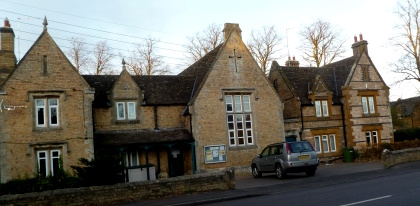SundayReflection
13th August 2023
RICHARD CORFIELD writes about
************************
Chemistry in the face of belief
Far from putting the debate to rest, the dating of the Turin Shroud merely fuelled the controversy.
In the spring of 1989, one of the most important papers in the science of archaeometry ...the scientific study of archaeological relics - was published. The Turin Shroud, supposedly the burial cloth that had wrapped the body of Jesus Christ after his crucifixion, was subjected to accelerator mass spectrometer (AMS) carbon-14 dating.
The result - from three different laboratories - indicated that it did not date from the time of the death of Christ but rather from between AD 1260 and 1390, the early medieval period.
That should have been the end of the matter, but such is the intensity of emotion surrounding the Shroud that the results were disputed almost immediately.
It was claimed that it had not been the original material of the cloth that had been dated - that a later patch had been sampled by accident or that the radiocarbon age had been reset by external agents ranging from 16th century fire damage to biofilms on the threads that imparted a spuriously young age to the relic.
The Shroud is one of the most important relics in the Christian church and has been an obvious and high profile candidate for measurement.
The Turin Shroud tests were complicated to organise. The politics of the Catholic church meant that extreme sensitivity had to be used in getting permission to sample in the first place and even more so when deciding from where on the Shroud the sample was to be taken.
In the end, three laboratories were chosen to perform the measurement.
Rupert Housley was then senior archaeologist at the Oxford AMS facility.
'The reason why three laboratories were doing the dating was because they wanted an international comparison,' he explains.
The sampling was done under the stringent supervision of Mike Tite of the British Museum.
One area of the Shroud, selected because it was obvious that it was not a later repair but the original fabric, was sampled by two Italian textile experts in the presence of Tite and Anastasio Ballestrero - a cardinal and the archbishop of Turin.
Never in the history of radiocarbon dating were samples treated with such care.
The whole of the radiocarbon community knew that the eyes of the world would be upon them.
In February 1989, the results were published in Nature after painstaking statistical work by Tite.1
The results were unequivocal. The Turin Shroud was not the burial cloth of Jesus of Nazareth.
Housley agrees: 'Around the 14th century there was a big market for religious icons and relics simply because they would pull in lots of pilgrims and generate a lot of local income. Religious centres such as cathedrals liked to have relics and reliquaries on site for this reason alone.'
Even today, the radiocarbon age of the Turin Shroud is still being challenged.
In 2013, a new study by Giulio Fanti of the University of Padua in Italy used spectroscopic methods 2 to test samples of the Shroud taken in the 1970s. Fanti's results date the Shroud to between 300 BC and AD 400: a 700-year interval that nevertheless brackets the death of Christ.
This argument seems circular: there is still no indication that the Shroud is even of 1st century age, let alone that it was anywhere near Gethsemane at the critical moment. 'The injuries detectable on the Turin Shroud are coherent to those described in the Bible that were inflicted on Jesus during his passion and death,' Fanti maintains.
'For the moment, there is not a completely sure scientific proof that the Turin Shroud enveloped the body of Jesus Christ, but after more than 15 years of studies on this argument, I am personally sure that the Turin Shroud was the burial cloth of our saviour.'
Would Ramsey be in favour of dating the Shroud again, 25 years on?
He picks his words with characteristic care. 'Yes I think I would... if you're careful to think about all the different hypotheses and make sure that the tests were set up correctly.
Ramsey is responsive to reasoned criticisms of the dating of the Shroud, which is why he is open to the idea of resampling. 'I don't think it's very healthy for people to go around in circles wishing various things to be true. I think that damages science.
So, I would quite like to see [the date] either corroborated or not; that's a very useful thing to know 25 years after the original dating.'
References
1 P E Damon et al, Nature, 1989, 337, 611 (DOI: 10.1038/337611a0)
2 G Fanti et al, Vib. Spectrosc., 2013, 67, 61 (DOI: 10.1016/j.vibspec.2013.04.001)
Richard Corfield is a science writer based near Oxford, UK
© Royal Society of Chemistry 2023
|
Contact the Rector
The Revd.Nic.Edwards
The Rectory,
Church Lane,
BUGBROOKE,
Northampton,
NN7 3PB
Land Line: 01604 - 815496
(Can be accessed from the mobile device)
Mobile: .....
E-mail:
thebeneficeofbhkandr at gmail dot com
|
|
Contact the Benefice Office
Sunday School Rooms, Church Lane,
BUGBROOKE, Northampton, NN7 3PB
Land Line: 01604 830373
E-mail:
thebeneficeofbhkandr at gmail dot com
Mon., Tues., Wed,, Thur., Fri.
9:00am to 11:30am

|
|
For Baptism bookings (Christenings)
to arrange an appointment please contact the Benefice Office.
For Wedding bookings:
please contact the Benefice Office to arrange an appointment.
|
|
Who Made This?
Seeing as you asked, if you can give helpful advice or report
factual corrections and 'deliberate mistakes',email
regparker3 at gmail dot com
|
|
Email addresses shown using words in an attempt to avoid 'spam',
Type the email address replacing 'at' with '@', and 'dot' with '.'
|
| |